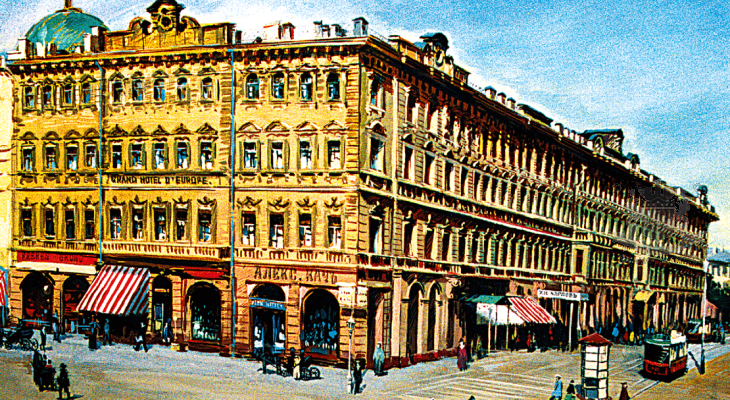
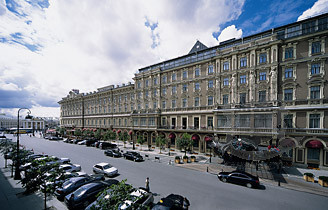
Grand Hotel Europe
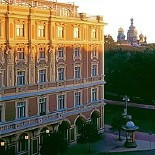
“There is nothing finer than Nevsky Prospect, at least in Petersburg: for Petersburg, it means everything. What splendour is missing from this most beautiful street of our capital? I know that none of the pale and bureaucratic inhabitants of Petersburg would trade this street for all the treasures in the world.”
*Nevsky Prospect* by Nikolai Gogol, expresses his admiration for the iconic street, portraying it as central to the life and spirit of St. Petersburg. There you find The Grand Hotel Europe – together with the Hotel Astoria – still the most popular hotel in St. Petersburg. It is constantly ranked among the top of the top.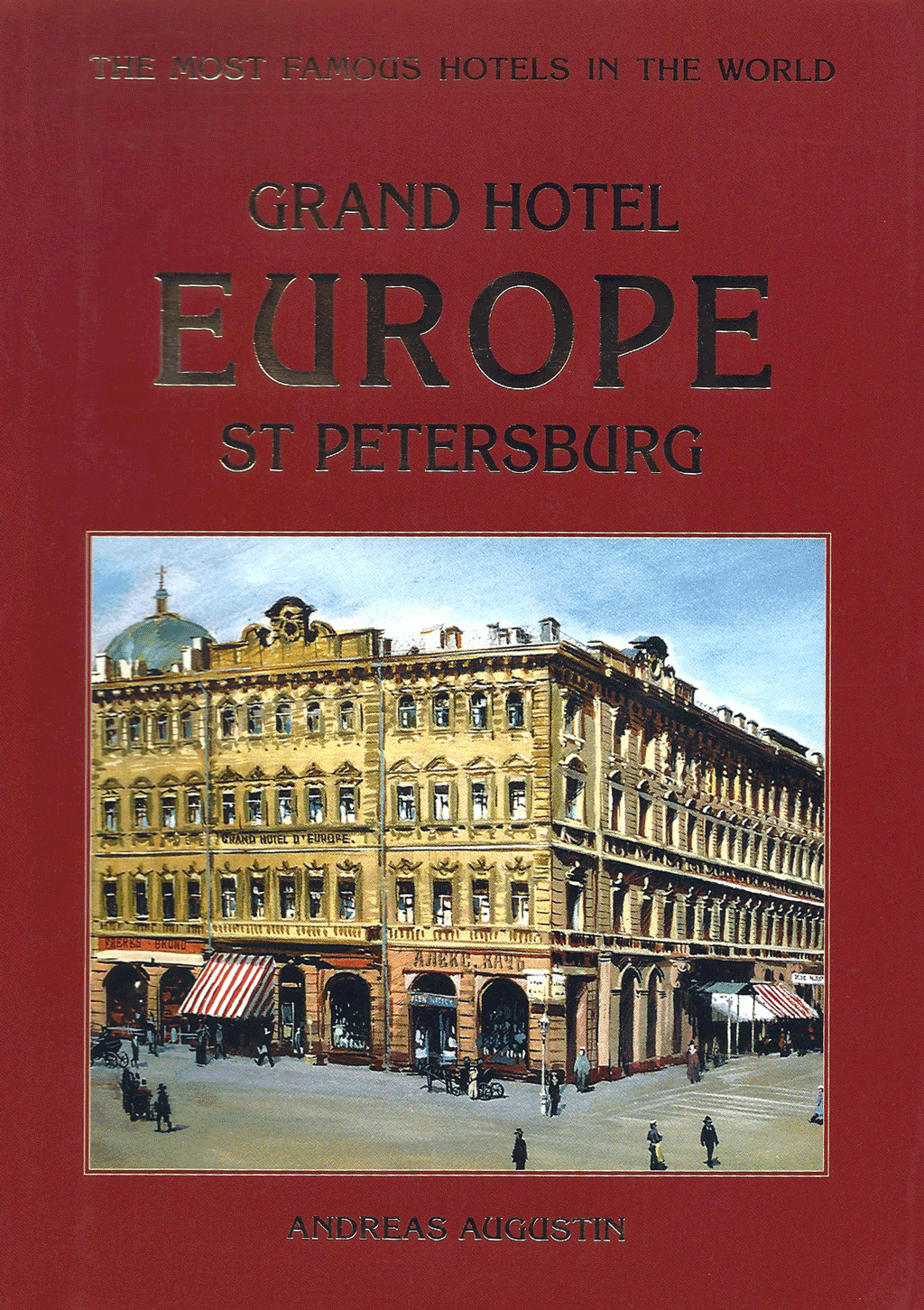
‘The mind wanders back to the early days of this restaurant, when the staff used to be Tartars and men only, never women. The Tartars were perfect servants with a great reputation for their soberness, cleanliness, honesty and diligence. The great composer Pyotr Tchaikovsky, who dined at the Europe one day in July 1877, was among those who appreciated the Tartars’ worth. He got married on 6 July and arrived in St Petersburg to introduce his wife to relatives. ‘We put up at Evropeyskaya,’ he wrote to his brother. ‘Very good, even luxurious.’ Unfortunately, it was not to be a happy marriage: ‘She is loathsome to me in every sense of this word,’ he said about his wife soon afterwards. After a few months the marriage broke up. Although in his opinion the hotel was ‘too central’, and perhaps reminded him of his wife, he stayed there again in June 1886. This time Tchaikovsky met the ‘King of Waltz’ from Vienna, Johann Strauss, who was visiting St Petersburg with his wife Adele.’
From our book Grand Hotel Europe

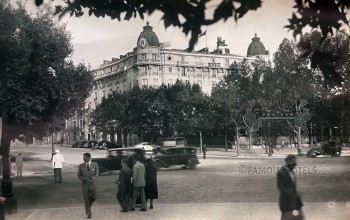

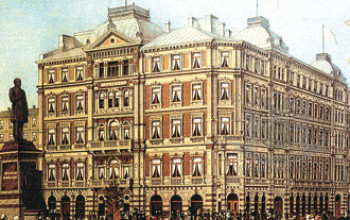
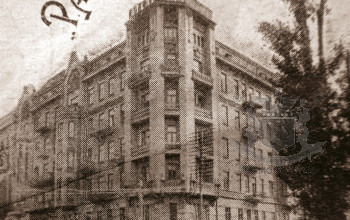



HISTORY IN BRIEF 1
1875: Opening year.
1991: After the fall of the Soviet Union, the Grand Hotel Europe reopens.
1995: Kempinski takes over the hotel.
2005: The hotel becomes an Oriental Express property.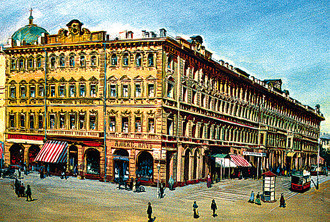
HISTORY IN DETAIL
1875, 1 January: Opening of the Grand Hotel d’Europe. The works were delayed due to a failure to have the drawing approved in time; then there were a series of external hold-ups, like the residents of Rogov’s house not leaving their flats, the lawsuit initiated by the board of the Evropeyskaya Hotel Corporation against the tavern owner who, occupying the central part of the house planned for the main entrance and stairs, refused to vacate the premises and even obstructed the works, demanding a tremendous amount of compensation . . . but Architect L F Fontana met the deadline . . . continously faced by all kinds of hindrances, he succeeded in completing the hotel by January 1, 1875, the commissioning date.
1881: Assassination of Alexander II by the revolutionary group People’s Will; succession of his son Alexander III. He built the Church of the Spilt Blood on the site where his father was murdered. An anti-reformist, he sticks to a repressive policy and persecution of the Jews.
1891: Construction begins on the Trans-Siberian Railway.
1894: Nicholas II, son of Alexander III, succeeds his father. He will be the last Tsar of Russia. 1896: The premiere of Anton Chekov’s The Seagull takes place at the State Theatre; the first movie showing, organised by the Lumière brothers, is held at the Aquarium Theatre. 1898: Founding of the Russian Social-Democratic Workers’ Party, the forerunner of the Communist Party, in Minsk. 1899: Birth of the novelist Vladimir Nabokov in St Petersburg.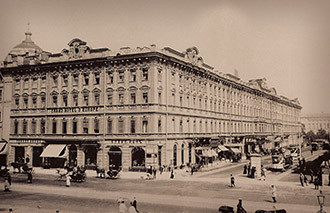 1903: Launch of the cruiser Aurora. After seeing action during the Russo-Japanese War the following year and spending time as a cadet training vessel it earns its place in history, firing the signal for the ‘storming’ of the Winter Palace by Bolshevik forces in November 1917. 1904: Russia is humiliated in its war against Japan in the Far East, exemplified by the destruction of the Baltic Fleet, having sailed half the way round the globe, in the battle of Tsushima. 1905: Outbreak of the First Russian Revolution following Bloody Sunday massacre of peaceful petitioners in Palace Square, St Petersburg; mutiny on board the battleship Potemkin in Odessa. 1906: Nicholas II is forced to establish a Russian parliament, called the Duma. 1914: Outbreak of war in Europe, with Russia fighting against German forces; on 18 August St Petersburg is given the Russian-sounding name, Petrograd. The news from the front is a succession of disasters. 1916: The monk Rasputin is murdered by Prince Yusupov and Grand Duke Dimitri. 1917: The uprisings of the February Revolution lead to the abdication of the tsar; this is followed by the October Revolution in which the Bolsheviks, under the leadership of Lenin, seize power. 1918: The Communists execute the Russian Imperial family on July 16 in Yekaterinburg, move the capital back to Moscow, sign the Treaty of Brest-Litovsk with Germany, and introduce the Gregorian calendar. 1920: Russia’s bloody civil war draws to a close; it has seen bitter fighting between the Red Russians and the Whites (anti-Soviet forces), aided by foreign troops. Petrograd has been saved from falling into White hands by Trotsky’s rallying of the Red Army. 1921: Kronstadt sailor’s revolt is brutally repressed. 1922: Joseph Stalin is elected as the Party’s first General Secretary. 1924: Death of Lenin; Petrograd is renamed Leningrad in his honour; Stalin’s rise to power. 1925: Trotsky, one of Stalin’s main rivals for the leadership, is exiled. 1928: Introduction of the first Five-Year Plan concentrates on the forced collectivization of agriculture. 1932: Russia is swept by a devastating famine that kills as many as five million people.
1903: Launch of the cruiser Aurora. After seeing action during the Russo-Japanese War the following year and spending time as a cadet training vessel it earns its place in history, firing the signal for the ‘storming’ of the Winter Palace by Bolshevik forces in November 1917. 1904: Russia is humiliated in its war against Japan in the Far East, exemplified by the destruction of the Baltic Fleet, having sailed half the way round the globe, in the battle of Tsushima. 1905: Outbreak of the First Russian Revolution following Bloody Sunday massacre of peaceful petitioners in Palace Square, St Petersburg; mutiny on board the battleship Potemkin in Odessa. 1906: Nicholas II is forced to establish a Russian parliament, called the Duma. 1914: Outbreak of war in Europe, with Russia fighting against German forces; on 18 August St Petersburg is given the Russian-sounding name, Petrograd. The news from the front is a succession of disasters. 1916: The monk Rasputin is murdered by Prince Yusupov and Grand Duke Dimitri. 1917: The uprisings of the February Revolution lead to the abdication of the tsar; this is followed by the October Revolution in which the Bolsheviks, under the leadership of Lenin, seize power. 1918: The Communists execute the Russian Imperial family on July 16 in Yekaterinburg, move the capital back to Moscow, sign the Treaty of Brest-Litovsk with Germany, and introduce the Gregorian calendar. 1920: Russia’s bloody civil war draws to a close; it has seen bitter fighting between the Red Russians and the Whites (anti-Soviet forces), aided by foreign troops. Petrograd has been saved from falling into White hands by Trotsky’s rallying of the Red Army. 1921: Kronstadt sailor’s revolt is brutally repressed. 1922: Joseph Stalin is elected as the Party’s first General Secretary. 1924: Death of Lenin; Petrograd is renamed Leningrad in his honour; Stalin’s rise to power. 1925: Trotsky, one of Stalin’s main rivals for the leadership, is exiled. 1928: Introduction of the first Five-Year Plan concentrates on the forced collectivization of agriculture. 1932: Russia is swept by a devastating famine that kills as many as five million people.
1934: Beginning of the period of purges and show trials is signalled by the assassination of Leningrad Party boss Sergey Kirov; up to 40,000 Leningrad citizens are arrested in the spring of 1935 alone.
1939: In August von Ribbentrop of Germany and Molotov of Russia sign a Non-Aggression Pact. 1941: Hitler launches Operation Barbarossa, the invasion of the Soviet Union, on 22 June. The siege of Leningrad begins in September. 1942: On 9 August, the date Hitler has fixed for the fall of Leningrad, the Philharmonia gives the city’s first performance of Shostakovich’s Leningrad Symphony.
1944: In January, The ‘Blockade’ is finally broken; over 800,000 citizens have died of illness, cold and starvation compared with only 17,000 as a result of enemy action.
1948: The death of Andrey Zhdanov, who had been in charge of Leningrad during the siege, is used as a pretext for another witch hunt; Zhdanov’s allies, many of them from Leningrad, are accused of trying to seize power and are executed.
1953: Stalin is succeeded by Nikita Khrushchev. 1955: Founding of the Warsaw Pact; St Petersburg’s first metro line opens. 1956: Khrushchev’s ‘secret speech’ to the 20th Party Congress, in which Stalin’s legacy is first questioned. Russian tanks suppress the popular uprising in Hungary.
1962: Cuban missile crisis.
1964: Khrushchev is forced to resign ‘for health reasons’ and is succeeded by Leonid Brezhnev.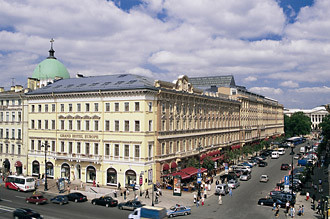 1968: Suppression of the Prague Spring.
1968: Suppression of the Prague Spring.
1982: Death of Brezhnev who is succeeded by Yuri Andropov, former head of the KGB.
1984: Andropov dies and is replaced by another member of the old guard, Constantin Chernenko.
1985: Death of Chernenko and the rise to power of Mikhail Gorbachev.
1987: Boris Yeltsin openly attacks Gorbachev and resigns from the Politburo.
1989: Elections offering a choice of candidates are held for the Congress of People’s Deputies.
1989: The Evropeyskaya closes down for a major face-lift. Viktoria Struzman is the architect of the reconstruction.
1990: Boris Yeltsin secures his election as chairman of the Russian parliament and proceeds to declare Russian independence on June 12.
1991: The citizens of Leningrad vote by a narrow majority in a referendum to rename the city St Petersburg. Soviet hard-liners’ attempt at a putsch fails and this effectively signals the end of Communist rule; the Commonwealth of Independent States formally replaces the USSR.
1991, 21 December: The renamed Grand Hotel Europe opens with a new face and its old grandeur. The hotel has 301 rooms, the restaurants are called The Europe Restaurant, Sadko’s, Chopsticks, Brasserie and Mezzanine Café.
1995: November, the German group Kempinski takes over the hotel’s management (General Managers: Stephan Kaminski, Richard Bayard, Elmar K Greif)
2002: The hotel is the first in Russia to receive the new extra long BMW 7.
2005, 10 February: Orient-Express Hotels Ltd. takes over the management of the hotel and announces major investment in the building of the Grand Hotel Europe. Plans are introduced to acquire a building next door connecting to the hotel's premises to open additional rooms. This goes well with the tradition of the house, which used to be a combination of two adjacent buildings. General Manager of the hotel at the time: Thomas Noll (right).
From the World of Politics Albert Gore Barbara Bush Bill Clinton Chancellor of Germany Deputy Prime Minister of Thailand Governor General of Canada Helmut Kohl HM King and HM Queen of Norway HM Queen Beatrix HRH Prince Charles HRH Prince Nicholas Romanoff and family HRH Prince of Denmark HRH Prince of Kent HRH Prince of Liechtenstein HRH Prince of Orange HRH Prince of Saudi Arabia HRH Sultan of Malaysia HRH The Sultan of Kelantan Jacque & Bernadett Chirac Jimmy Carter Juan Antonio Samaranch Madelene Albright Mikhail & Raisa Gorbachev President of the Ukraine President of Argentina President of Finland President of Germany President of Iceland President of Kirgizstan President of Switzerland President of Tadzhikistan Prime Minister of Canada Prime Minister of France Prime Minister of Hungary Prime Minister of India Prime Minister of Russia Prime Minister of Thailand Celebrities Claudio Abbado Thomas Anders Neil Armstrong Charles Aznavour Cecilia Bartoli Bjork Diter Bohlen Mikhail Borschevsky Chris Burg Gary Busey Bvlgary Montserrat Caballe Jose Carreras Jim Carrey Van Clibern Joe Cocker David Copperfield David Coverdale Sindy Crowford Catherine Deneuve Gerard Depardieu Placido Domingo Michael Flatley Pink Floyd Jane Fonda Justus Frantz Richard Gere Hubert Givenchy Ludmila Gurchenko Whitney Houston Elizabeth Hurley Julio Iglesias Elton John Quincy Jones Evgeni Kissin Mark Knopfler Gedon Kremer Lang Lang Amanda Lear Vanessa Mae Steve Martin Mireille Mathieu Paul McCartney Zubin Metha Nikita Mikhalkov Helen Mirren Depeche Mode Luciano Pavarotti Mikhail Pletnev Maya Plisetskaya Eros Ramazzotti Vadim Repin Mstislav Rostropovich Demis Russos Claudia Schiffer The Scorpions Emma Shaplin Sergei I. Sikorsky Sting Sharon Stone Modern Talking Chris Tucker Ted Turner Peter Ustinov Galina Vishnevskaya Mary Sean Young ******* and historically seen there were: HM King Gustav V of Sweden HH Prince Hiroyashu Fushimi of Japan HRH Chakrobon Prince of Siam Lord and Lady Astor Neil Armstrong Ivan Bunin Van Cliburn Isaak Dunaevsky Maxim Gorky Nadezhda Krupskaya Vladimir Mayakovsky Anna Pavlova Sergei Prokofiev Grigori Rasputin Demis Roussos George Bernard Shaw Dmitri Shostakovich Igor Stravinsky Pyotr Tchaikovsky Ivan Turgenev ****
FAMOUS VISITS
Turgenev – who was a regular guest of Klee’s hotel – had become an equally regular client of the Evropeyskaya. He stayed there in 1878, 1879 and 1881. He had become such a famous literary figure and the centre of attention that he received invitations to charity evenings, dinners were organised in his honour; crowds gathered to see him and he was inundated with flowers that filled his suite. His room on the third floor of the Evropeyskaya Hotel was turned during these weeks into a sort of a visiting office. Alongside famous faces, leading figures in journalism and literature, one could see total strangers here, students, delegations of self-styled circles. Nearly everyone wanted to pay their respects to him and young people stood in line for hours. Turgenev stayed at the Evropeyskaya for the last time on 26–28 August 1881. He was on his way to Paris, where he would die in 1883.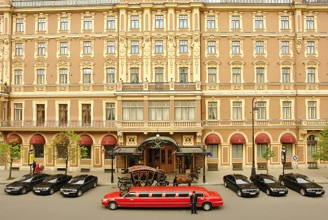 In April 1908, HRH King Gustav V of Sweden – presumably on better terms with the Russian tsars than his predecessors – came to St Petersburg to attend the marriage of his son, Prince Wilhelm, to the Grand Duchess Maria, first cousin of Tsar Nicholas II. He stayed at the Hotel d’Europe and was welcomed by his new Russian relatives at Tsarskoe Selo, the tsar’s summer residence near St Petersburg. Enrico Caruso (1873–1921) Italian tenor, renowned for his roles in the operas of Verdi and Puccini, became the ‘King of Tenors’. At the grand Hotel Europe he met Luisa Tetrazzini (1871–1940), a young and most talented Italian coloratura soprano. Warm and sentimental, she always spoke with emotion of her first meeting with Caruso in St Petersburg. ‘He gave me the advice of a lifetime: Go to England and be recognized as “the soprano of the world!” he said.’ Tetrazzini went to England, made her debut at Covent Garden Theatre and became the ‘soprano of the world.’ *******
In April 1908, HRH King Gustav V of Sweden – presumably on better terms with the Russian tsars than his predecessors – came to St Petersburg to attend the marriage of his son, Prince Wilhelm, to the Grand Duchess Maria, first cousin of Tsar Nicholas II. He stayed at the Hotel d’Europe and was welcomed by his new Russian relatives at Tsarskoe Selo, the tsar’s summer residence near St Petersburg. Enrico Caruso (1873–1921) Italian tenor, renowned for his roles in the operas of Verdi and Puccini, became the ‘King of Tenors’. At the grand Hotel Europe he met Luisa Tetrazzini (1871–1940), a young and most talented Italian coloratura soprano. Warm and sentimental, she always spoke with emotion of her first meeting with Caruso in St Petersburg. ‘He gave me the advice of a lifetime: Go to England and be recognized as “the soprano of the world!” he said.’ Tetrazzini went to England, made her debut at Covent Garden Theatre and became the ‘soprano of the world.’ *******
*************
The Tourist’s Russia Ruth Kedzie Wood, 1912: ‘The Russian is always frankly anxious to please and assist, and is never indifferent to a tourist’s need of help. From the hall-porter in frock coat to the manservant in baggy red trousers and boots to his knees, the watchword is courtesy. ‘The lavish nature of the Russians demand a groaning board, and the well-to-do will contest that they eat extravagantly and overmuch. The soups are elaborate, the sauces rich in butter, the pâtés savoury, the meats choice and highly-seasoned, the desserts very sweet. The result is a cuisine which tempts the normal palate to indiscretion. The ménus are so varied that any taste may be gratified, many European dishes being found among them. ‘The impression that one has entered a world quite apart from the west of Europe is accentuated by the sight of hieroglyphics on wall and signboard, by the emphatic colours that prevail in garments and house decoration, and the stocks of shop and market.’ ************ Mystic Grigoriy Rasputin from Siberia was a regular at the Grand Hotel Europe. He arrived in St Petersburg in 1911 and within a few years had become one of the most influential men in government circles. His ability to remain in such a high position despite widely publicized bouts of drinking and womanizing was due to his close relationship with Nicholas II‘s wife, Alexandra. The heir to the throne, Alexis, suffered from haemophelia, and only Rasputin could do what the top medical professors could not: he could stop the boy‘s bleeding. Rasputin is as famous for his death as he is for his life. At the end of 1916, a group of aristocrats in cahoots with Grand Duke Dmitri Pavlovich (a cousin of Nicholas II) decided that Rasputin‘s influence had grown too great and that he had to be killed in order to save Russia. So it happened – and we will spare you the details. *****
******
ON THE SAFE SIDE The security manager of the Grand Hotel heads his own small army within the hotel’s premises. There is literally nothing that escapes the eyes of 94 cameras, which are positioned from the top of the roof to the outside of the hotel, and in every important corner of every corridor. Legendary the men who tried to steal toilet seats, taped ‘red-handed’ and immediately arrested. ‘We can prevent crime 95% and solve it 99.9%. Not bad for an international hotel!’ the security manager smiles. Above: The security of a visit of a head of state is paramount. The monitors in the security office have an eye on Germany’s Chancellor Schroeder during his visit to the Grand Hotel Europe. **********
On a visit to St Petersburg, Frederick Forsyth sees evidence in the city’s design and dazzling architecture of two very different Czars: its founder, the maritime-obsessed Peter the Great, and the feisty, hedonistic Catherine II: It is hard to explain why I had never been to St Petersburg until 2006. Perhaps because for the first 53 years of my life it was Leningrad, and tourism to the USSR through the Cold War was a rarity indeed. During World War Two and the 1,000-day siege from 1941 to 1944, the city sustained awful damage. And for the 46 years after that it hardly experienced a lick of paint or a dab of plaster. But after Mikhail Gorbachev abolished the USSR in 1991, restoration could really begin. So perhaps I was wise to wait, because, although work is not finished, the great city by the Neva gleams and glows in its pastel colours, picked out in cream and white. Six hundred palaces adorn the “Venice of the North”—several score of them are museums and a rare few are converted into hotels, among them the Grand Hotel Europe. Although St Petersburg was the royal capital from its founding in 1703 to the end of monarchy in 1917, two Czars stamped their hallmark and name upon the city: Peter the Great, who founded it, and Catherine the Great, who created one of the most glittering courts in Europe here. Peter must have been a remarkable and strange man. For one thing he grew to 6 feet, 7 inches tall. That would make a rugby line-out forward today, but then he was a true giant. Among his obsessions were the open sea and the intent to create of Russia a maritime power—which he did. It was the lure of the access to the Baltic and the world that brought him to a sprawling cluster of islands at the eastern end of the Gulf of Finland, known only for a bit of wildfowling. When he came there was nothing but marsh and sea birds. Oh, and the mighty Neva flowing from Lake Ladoga to the sea. A truly bizarre river; only 50 miles long, immensely deep, half-a-mile wide and, due to the drop from the lake to sea level, the fastest current in Europe. Along its banks and round its islands he ordered the driving of the piles and the building of the stone walls to turn mudflats into quays. Lest we lose sight of the ruthlessness of the man, he introduced serfdom to acquire a labour force, and the toilers died like flies. The winter here is harsh—seven months of bitter cold. Did I say a “strange” man? He was more. He was driven, obsessive and riven by fixations. Despite his height, he hated things to be tall. He decreed low ceilings and low buildings; to this day his city refuses to deface itself with skyscrapers and so never intimidates in the manner that New York’s concrete canyons can do. He also decreed there be no bridges across the Neva. How to cross? He urged every citizen to own a skiff—or use the ferry. To this day the bridges are all low, open at the centre to allow ships to pass, and remain open all night. Despite his power, he lived in conditions of amazing frugality. His villa by the Neva is an ordinary townhouse and his retreat at Peterhof, the Monplaisir, little more than a cottage—but a gem of a cottage for all that. As a youth he spent time in the shipyards at Deptford, south-east London, insisting on working as a labourer to see how Europe’s greatest maritime nation built their ships. From this he came to revere England; his other love was the UK’s maritime rival—Holland. When he got home and became Czar he imitated the ships, d?cor and “style” of both countries, and the traces stare you in the face as you tour. If Peter, who died in 1725, created the marine fortress and shipyards, Catherine was responsible for the elegance, the glamour and the sheer luxury of a royal court that became and remains a legend. Like France’s Louis XIV, the Sun King, Catherine made plain she expected the nobility to be around her, not far away getting up to mischief. Every noble worth his title had to dance attendance, and hence the construction of all those palaces—though, to be fair, most would qualify as mansions. Still, restored to how Catherine would have known them, their pastel frontages now flank the Neva and the myriad smaller rivers and canals that caused earlier travellers to compare St Petersburg with Venice. For today’s visitor a dozen will probably suffice to make the legs ache and the feet burn. The Hermitage alone is actually five palaces, centred on the Winter Palace, and can only show 10 per cent of its three million artefacts at one time. It was in the Yusupov Palace that a group of nobles gruesomely (because he refused to die) murdered the Siberian monk Rasputin. Down the quay, anarchists assassinated Alexander II and the gold-gleaming Cathedral of the Spilled Blood is built over the spot. Gold leaf is everywhere, on carved woodwork, walls and onion domes and it blazes when the sun is kind enough to shine. Tsarkoe Selo, out of town, is where they went in summer for a spot of fresh air; the Peterhof, which you can visit by hydrofoil and avoid the traffic, hosts another cluster of blue/white/gold palaces and churches. Should the evening be balmy—as it was when my wife, Sandy, and I were there—take a boat from one of the quays right in the shadow of the Spilled Blood. We eschewed the big cruisers and for ?30 rented a chug-chug pinnace to take us threading down the canals and out into the Neva. Here we would see the magnificence of Peter’s maritime capital rising in a blaze of colours from the river and the Gulf. We went to see the cruiser Aurora, still lying at anchor not far from where her dawn salvo triggered the Bolshevik Revolution in 1917. And when the legs can take no more; when, as Sandy would say, you are “museumed out”, there is always the Caviar bar at the Grand Hotel Europe for some seriously decadent self-indulgence. This is also where we found the best-flavoured vodka in town: the grapefruit version. The austere Peter might not have approved, but jolly old Catherine would have joined you for a glass. So, na-zdorovya!
************
In November 1995, Kempinski won the management contract for St Petersburg’s finest hotel. Stephan Kaminski arrived to sail the flagship of Russian hospitality through the first years, followed by Richard Bayard. Bayard faced a difficult situation during the collapse of the economy in 1998. ‘We knew there would be demonstrations. We immediately camouflaged the hotel and boarded up all the windows with wood and decorated them with flowers. But when the demonstrators came, they went through the streets in total silence, no aggression, no violence. Like pilgrims; a sign of great discipline’. ‘During that time, we tried to help our employees and at least feed them even if they had short-term work. Just to give you an idea of the calibre of the people who work here: two young bachelor waiters from L’Europe Restaurant came and suggested that if we planned to cut their salaries, could we cut them more than planned and give the balance to a colleague, who has a wife and two children to support.’
*********
The hotel was featured in the 1995 James Bond movie, Golden Eye. However, no film was actually shot in the hotel, at the objection of the manager at the time, Jaideep Mazumdar. It was filmed in the “Nevsky Palace” a short distance away.
Leon Larkin
Thomas Noll
Elmar Greif
Stephan Kaminsky
301 Rooms
70 Suites
Minibar Personal safe Satellite TV and radio International phone with modem connections Writing desk Armchairs Hairdryer Wireless Internet Access on request
Situated on the first floor, exactly over the main entrance, the Lidval Suite is a home away from home for the powerful and the famous. Bill Clinton spent a few hours here to get some rest and Jane Fonda asked for a little stove to prepare her own health food in a corner of the room. The clock with the lion on it is one of the precious pieces of art in the house.
ROSSI'S - THE ITALIAN RESTAURANT Filippo Licata has been appointed as the new executive chef at restaurant Rossi’s in Grand Hotel Europe in St. Petersburg. Family passion brings Filippo Licata on the cookery path. Of Italian nationality, born in Belgium, he graduated from Hotel Business School of Brussels. There, Filippo increased his culinary skills by working in several Michelin rewarded restaurants, also in England and evidently in Italy. Regularly, he returns to beautiful Toscana, where he comes from, and draws his new creative inspirations from this native gastronomic region. Filippo describes his cuisine as a staggering fusion of Mediterranean style, personal taste and his work experiences around Europe.
THE FINE RESTAURANTS ARE: L'Europe Restaurant French, European Caviar Bar Russian Chopsticks Cantonese, Szechwan
Caviar and Blini, served with chilled Vodka, is as much a culinary standard in luxury conscious Russia as Lamb with Red Wine in Sydney or Wiener Schnitzel with young Austrian wine 'Heuriger' in Vienna.
Although this sounds very odd, why not walk the corridors to get an impression of the enormous dimensions of this truly "grand" hotel? You will also come across the beautiful staircase, which leads you straight to the Caviar Bar - a great destination. The arts and antiques exhibited at the hotel fill a few pages of our history book and are practically on display everywhere. We love the fine sculptures on the ground floor, today very well lit and professionally presented.
Health Club & Beauty Room The Planet Fitness Health Club at the Grand Hotel Europe is not only a great place to stay in shape while on the road, its soothing atmosphere makes it the perfect place to relax and unwind after a busy day and refresh yourself for the evening’s entertainment. No expense has been spared to bring in the latest in health and fitness equipment. The Health Club is equipped with the finest in cardiovascular exercise machines, while a sauna and plunge pool help you unwind after your workout. Just looking and feeling better are great reasons to visit the club. We also offer a full-service hair salon as well as tanning and massage rooms and a full range of spa beauty treatments for those finishing touches. At the Planet Fitness Health Club we offer - Spa Treatments Massage, aroma massage Body scrub Body wrapping (spirulina, Hungarian spa mud) Skin and body treatments Facials (masks, massage) Depilatory waxing Barber/Beauty Salon Haircut (with or without styling) Coiffures Hair colouring, tinting, streaking Hair treatments and scalp care (Professional Wella and L’Oreal products) Manicures Pedicures A wide variety of the finest health and beauty products are available for sale, so if you find something you like, you can take it home. And at the end of your workout or relaxation, what could be better than an assortment of complimentary fruits and beverages? The Health Club entrance is located just behind the bar of the Mezzanine Café. Opening Hours Planet Fitness: Weekdays 07:00 – 22:00 Weekends/holidays 09:00 – 21:00 Hair/Beauty Salon: 09:00 – 21:00 daily